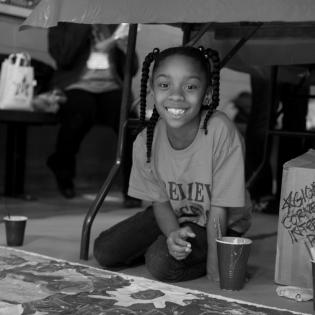What Can I Do for You?
Discuss when permission is needed in order to perform an act of philanthropy. Learn and practice a song about giving.
- define community as people coming together around a shared interest or place
- make good judgments about what philanthropy requires permission from an adult
Piano or keyboard to play music, or a recording of the song Random Acts of Kindness
Here is one version of the song by a group of first graders.
- Kelley, Rick. "What Can I Do for You?"
- Kelley, Rick. "Random Acts of Kindness"
Instructions
Anticipatory Set:
Review the brainstormed acts of kindness ideas or handout from lesson one. Talk about which of these acts of philanthropy need permission from an adult and why. Listen to and guide young people to make good judgments about safety and the needs, preferences, and privacy of others.
Discuss respect and empathy in giving. Not everyone is just like me, and I cannot assume that what I like will be liked by another.
For example, if someone has sensory issues or is in a wheelchair, there may be actions that will not be welcome. A big hello can be friendly to one person and too loud to another. A person in a wheelchair probably wants you to ask before you touch their chair.
Optional: Read and discuss the book Just Ask by Sonia Sotomayor.
Brainstorm a list of philanthropic acts that young people can do at school or in any community setting that would not need permission from an adult and will likely be welcome by anyone. For example, it is always okay to pick up litter when you are out for a walk, but be aware that some things may not be safe for you to pick up.
Note: You may define community as not just their town but also anytime people gather with a shared interest. For example a faith-based organization forms a community. A sports team is a community. A family or classroom forms a community. Ask for examples of communities the children belong in.
Teach the song "Random Acts of Kindness" or "What Can I Do for You?" by Rick Kelley. Music and lyrics below.
Read about the service-learning project called Monthly Kindness by Worthingon Elementary School students who were taught using this What Can I Do for You? lesson to guide student learning and action.
Philanthropy Framework
-
Strand PHIL.II Philanthropy and Civil Society
-
Standard PCS 05. Philanthropy and Government
-
Benchmark E.7 Describe why the classroom, school, or neighborhood is a community governed by fundamental democratic principles.
-
-
-
Strand PHIL.III Philanthropy and the Individual
-
Standard PI 01. Reasons for Individual Philanthropy
-
Benchmark E.7 Give classroom examples of when a student does not need the teacher's permission to act philanthropically.
-
-
